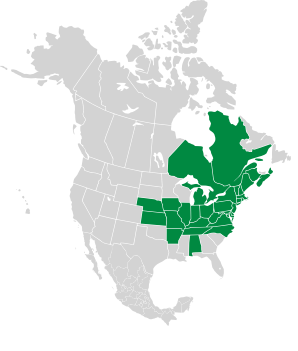Ibidium plantagineum (Raf.) House

|
Spiranthes lucida (H.H. Eaton) Ames Shining ladies’-tresses
Shining ladies’-tresses are native to eastern North America. They prefer saturated, calcium-bearing, and gravelly or sandy soils, such as damp thickets and meadows. Plants: 1½-16″ (4-40 cm) high, with leaves only at the base. Leaves: 3-5 light green basal leaves are lanceolate to oblong, up to 4½″ (12 cm) long and ¼-½″ (7-15 mm) wide. They are distinctly shiny. Flowers: Up to 20 flowers are wrapped in a tight spiral on a hairy spike. Sepals are ~3/16″ (5-5.5 mm) long, and fused at the base for ~0.7 mm. The interior of the tubular flower is yellow, with green lines. Flowers appear from May to early July, earlier than similar species. Fruits: Seeds have a net-veined coating. Here are some similar species: |
8/28/2021 · Otter Brook Preserve, Harpswell, Maine · ≈ 4½ × 7″ (11 × 16 cm) 8/28/2021 · Otter Brook Preserve, Harpswell, Maine · ≈ 4 × 6″ (10 × 16 cm) |
||||||||||||||||||||||||||||
|
| |||||||||||||||||||||||||||||
Spiranthes cernua |
Spiranthes romanzoffiana |
||||||||||||||||||||||||||||
|---|---|---|---|---|---|---|---|---|---|---|---|---|---|---|---|---|---|---|---|---|---|---|---|---|---|---|---|---|---|
| Common Name |  |
 |
|||||||||||||||||||||||||||
| Plant | Up to 1′ (40 cm) tall, though most of this height is the flower stalk. | 2½-16″ (7-40 cm) high. | |||||||||||||||||||||||||||
| Flowers | The raceme (flowerhead) is up to 4½″ (12 cm) high, roughly cone-shaped, on a single stem well above the leaves. Tiny white flowers about ⅜″ (1 cm) long spiral around the spike. Flowers are tubular in shape, yellow in the center, with small sharp-tipped petals. Flowers appear between August and November. | Up to 40 flowers are arranged spirally around a nearly hairless spike ¾-6″ (2-14 cm) high. Sepals and petals are fused together, and ¼-⅜″ (8-12 mm) long. They appear from May to September. Sepals are broad and white | |||||||||||||||||||||||||||
| Leaves | A few long, narrow leaves occur, mostly at the base of the plant; they are 4-8″ (10-20 cm) long and ⅛-¾″ (5-20 mm) wide. | 2 to 3, rarely up to 5 Basal leaves are 2½-8″ (7-20 cm) × ⅛-⅜″ (6-12 mm). Leaves are linear or lanceolate. | |||||||||||||||||||||||||||
| Range/ Zones |
|
|
|||||||||||||||||||||||||||
| Type | Wild | Wild | |||||||||||||||||||||||||||
Online References:
Goorchids.northamericanorchidcenter.org
The Wisconsin Department of Natural Resources
Www.nrc.gov (PDF)
References:
Clemants, Steven; Gracie, Carol, Wildflowers in the Field and Forest, Oxford University Press, 2006, p. 380
Ibidium plantagineum (Raf.) House
Spiranthes lucida description by Thomas H. Kent, last updated 31 Aug 2021.
© FloraFinder.org. All rights reserved.
Range:
